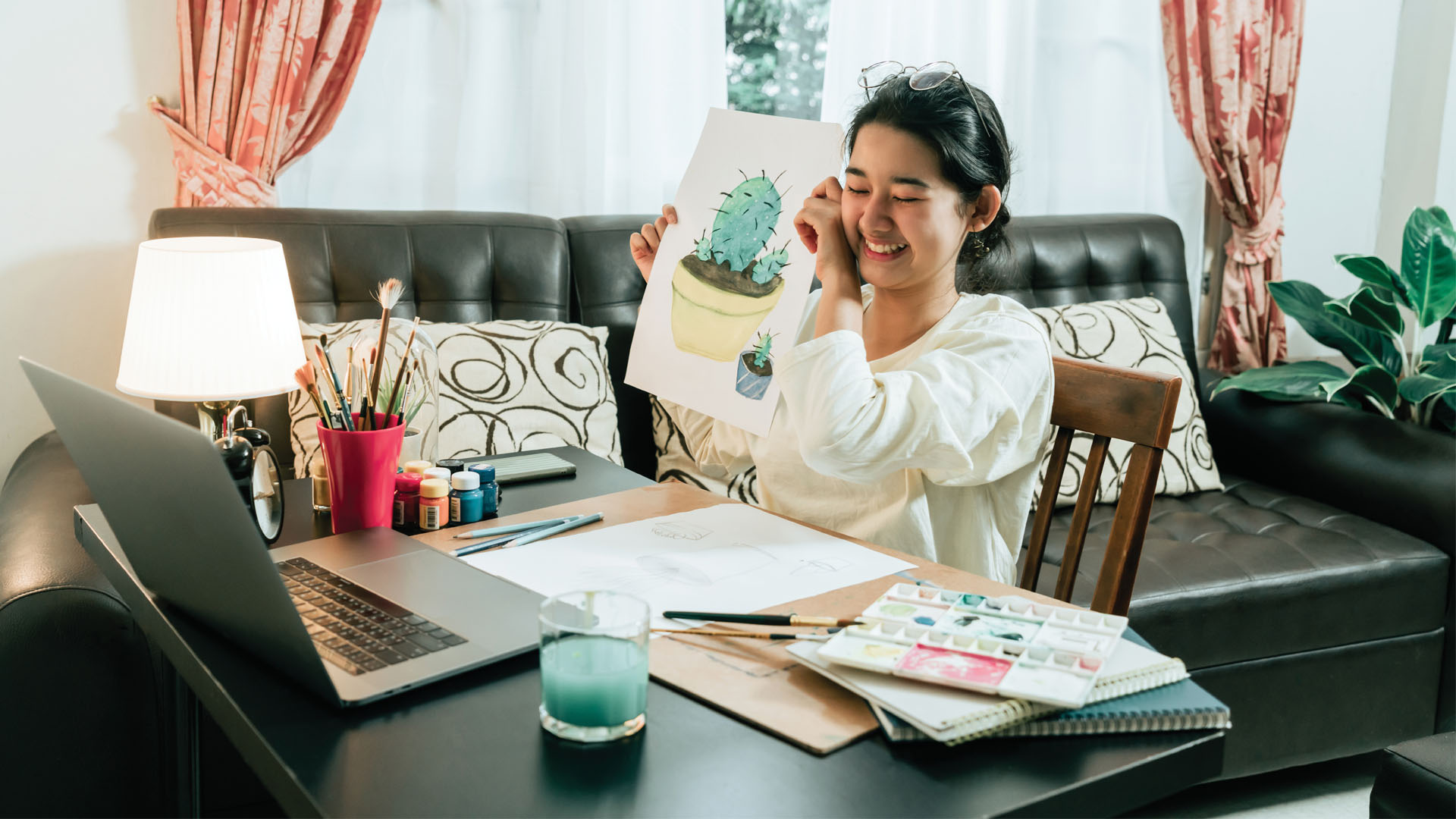When I was approached to write this article, I immediately thought about how play with individuals in treatment has been affected by the COVID-19 pandemic and the restrictions on in-person therapy. It was particularly difficult for me to revamp what I do in my sessions, because as an Art Therapist most of my tools were suddenly gone. However, I feel the lessons learned over the past year were invaluable and will make me a stronger therapist as I move forward. In this article I hope to offer a few new ideas as well as empathy for those of you who are in the same boat.
How an individual makes art, and how they play, offers valuable clinical information — for example, are they choosing to use chalk pastels or colored pencils? Are they contained to a small area or coloring the whole paper? We can see how rigid or flexible someone is by joining them in their play. Frustration tolerance and impulse control are also quickly challenged when playing with another person. This list is not exhaustive, of course, but rather something to get the reader thinking about the complexities that encompass the loss of in-person play: How do we play when we are not physically together?
In the mental health world, play and art making are great ways to join with both children and adults. In children, it meets them where they are and allows for a familiarity, which helps them to feel safe. In adults, we can often sneak underneath defense mechanisms to reveal more than just talking might. Adults are often more resistant to art making and might not have materials in the home; I found using the “white board” function on Zoom was a good alternative. For some, the client directed me to draw what they said. Some might draw independently, or we could draw at the same time. The difficulty in controlling the mouse and limited choice of lines and colors, removed the barrier of “not being a good artist,” which many people will say to avoid making art in sessions. By seeing I also could not create a masterpiece, it lowered expectations and made the tasks more approachable for many adults.
Another new experience was being at the mercy of the client moving around. My youngest clients were often running all over their homes, giving me motion sickness, excitedly showing me their toys and pets. My first goal with clients like this is to regulate their body. I have a set of stretching/breathing exercises we do at the start and end of each session. The children quickly learn the routine and some request it. These types of rituals set up a new type of holding environment for our sessions. It is like a virtual boundary on our time when they will be focused and engaging with the screen. It has become a replacement for the walk to and from the waiting room.
The freedom to move while on screen has also offered some new opportunities to play. One of my 5-year-old clients likes to hide the iPad and then she “rescues” me. From the outside this looks like me sitting in my office yelling “HELP! HELP!” and a small child in a cape digging out an iPad from under a pile of stuffed animals. Therapeutically, we are hitting on the need she has to be in control, and it allows her to try out being the one who can help others, instead of always needing help. It is interesting how the therapeutic benefit of the play is still happening for this client via the screen.
Another gift we have been given by being virtual is to see the client’s interests “in the wild.” For example, when I notice the way the client has decorated their room and can comment, “Wow, cool dinosaur poster!” it opens up the conversation to what they like. They also have access to their own toys, which they often show me while we are talking. I even have a few clients who will play their musical instruments for me – which never would happen in the office. I think about the environment they are showing me as an extension of themselves. When I encourage them to talk about their interests, it offers a safe space to express themselves. This is something that is missing out with the lack of peer engagements they usually get at school. For example, the middle schoolers and teens are particularly working through how to present themselves as individuals and it is important to give them the opportunity to do so. Where a rainbow flag may have been sewn on a backpack in the past, we now see it on the wall behind them in the view of their camera. All of this is important to them and is valuable clinical information.
Lastly, and perhaps the most surprising to me, has been how I have started to join and use video games therapeutically. Many of the teens and young adults come to me with a presenting problem that says something like: “Stays in room playing video games all day.” Our virtual connection gives us a leg up in these situations. We can join them in their rooms for session, where they are often most comfortable and feel safest; they are not cranky as a result of being dragged to an appointment in office. Instead of immediately working on reducing time on video games, I like to ask questions and learn more about the games. The clients often open up when they realize you are interested and not against them playing video games. There is valuable clinical information in what kinds of games they are enjoying and what they choose to comment on. Going to YouTube and watching gameplay together is also very helpful in joining. I react with interest, ask questions, and praise them for showing me how they play, just like I would if they were making art with me. Over the past year, I have learned a lot about videogame culture, and I have a new respect for it. However, excessive playing can be isolating and addicting. I have had more success with clients setting up playing limits once I start from a place of understanding their interest in the play and the world surrounding the game – approaching video games as part of who they are rather than a problem behavior first.
As we are starting to be able to return to in-person therapy, I will be taking these lessons with me. I believe this past year has shown us how much we need human connection, whether it in person or on a screen. We also need more opportunities to be silly and play, no matter our age. Play looks different for all ages and developmental levels, and it is all valuable. Consider how you can model letting your guard down in session to show it is OK to play in therapy, even with adults. You will still get valuable clinical information and develop relationships where you may not have thought possible.






